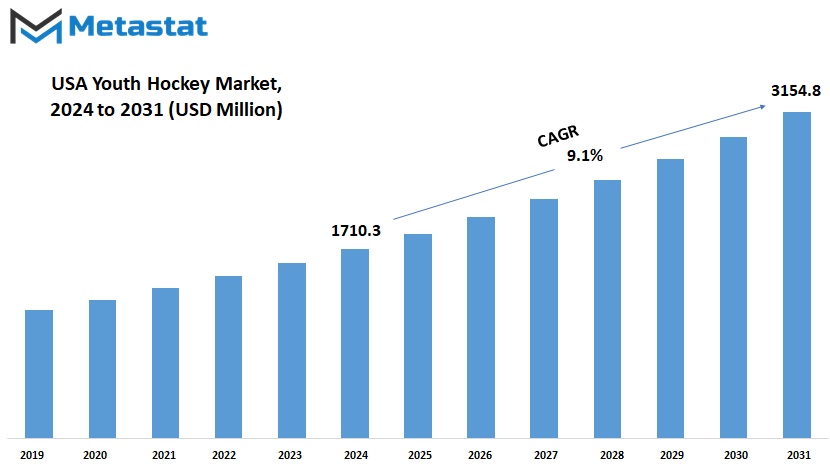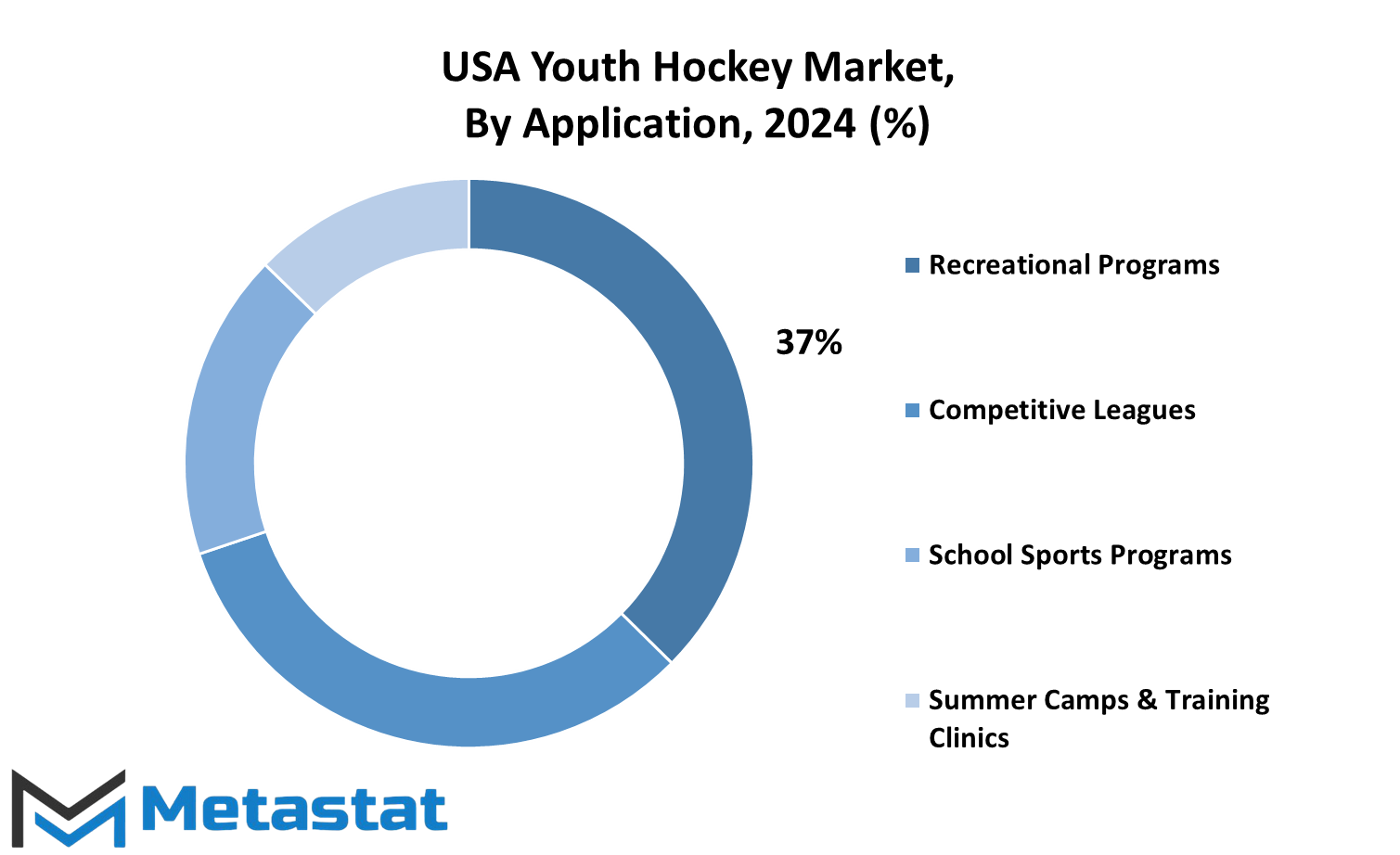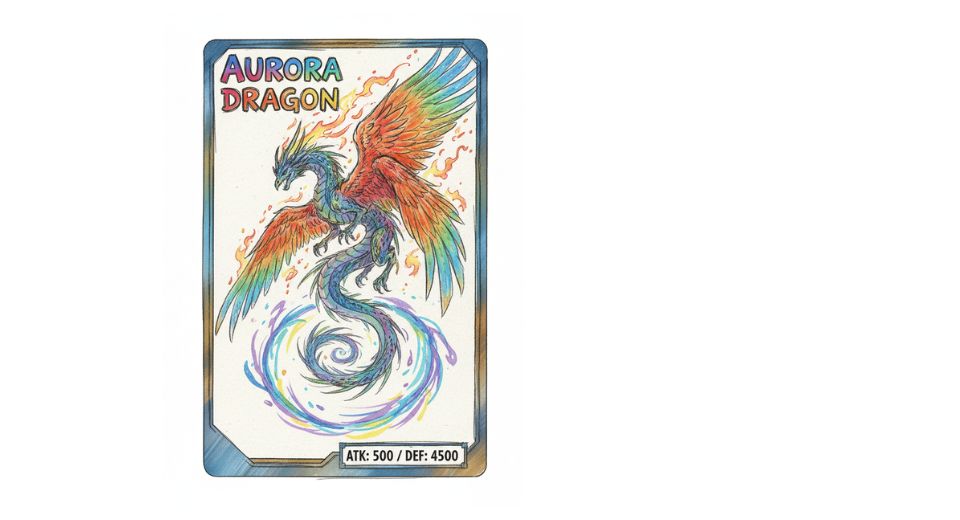MARKET OVERVIEW
The USA Youth Hockey market forms the core of the American sports industry, focusing specifically on young athletes who participate in ice hockey from early childhood through the teen years. The market is elaborately broad and covers a range of products and services as continuously guiding youth players into several tiers of competitions-from local leagues up to national tournaments. The USA Youth Hockey market presents an opportunity to both athletes and coaches, families and supporting industries, in contributing to the growing demand for youth hockey-related goods and services.
Youth hockey in the United States has experienced consistent growth over the years through a combination of traditional interest in hockey-heavy regions such as the Northeast and Midwest and increasing participation throughout much of the United States. Organizations like USA Hockey offer the framework where training, regulation, and competition take place promoting sportsmanship and skill development. More youth leagues, regional tournaments and skills development programs act as springboards for young players hoping to move up to school teams, collegiate leagues or professional aspirations.
The USA Youth Hockey market is broad and diversified: it currently comprises equipment and apparel, training centers, and individual coaching. Skates, sticks, helmets, and protective equipment are, at a minimum, what a player will need regardless of skill level, and brands are constantly working on innovation: lighter, stronger, and safer designs in response to the demands of young players. And while beyond the sale of equipment, off-ice training programs play a significant role in building strength, agility, and endurance. Again, these are as much part of the USA Youth Hockey market as the equipment itself, indicating growing awareness from young players and their families of the holistic development of athletes.
The market also encompasses strong infrastructure in the form of ice rinks and fully devoted facilities to youth hockey programs. From recreational leagues to high-intensity competitive hockey, these facilities are essential in providing the needed spaces for training, practice, and tournaments. Also, with the hockey’s growth into traditionally non-hockey regions, more arenas are open throughout the year to satisfy the ever-higher demand for ice time. As a result, facility management for an ice rink has emerged as a very prominent part of the USA Youth Hockey market as centers increasingly orient themselves with amenities related to youths, spectator areas, and resources of coaching.
Youth hockey tournaments and events have increasingly become strong components of the USA Youth Hockey market by attracting families, teams, and fans from almost all regions. National and regional tournaments provide participating young players the chance to play at levels they’d otherwise never experience while also involving whole communities and fostering youth sports tourism – a vital economic engine. Their events typically attract partnerships and sponsorships with willing brands looking to tap into young athletes and their families, thereby expanding the commercial reach of the market.
The USA Youth Hockey market is expected to further diversify, with the trends laid towards more specialized training, advanced technology in equipment, and wider accessibility to allow the trend to grow throughout the country. In addition, the market will continue to evolve based on the needs of the young athletes-from stricter player safety standards to opportunities that allow for development of excellent skills. USA Youth Hockey, therefore, gives support to the future of American hockey, with long-term commitment in developing the next generation of young athletes through a sport that inspires teamwork, dedication, and passion for playing.
USA Youth Hockey market is estimated to reach $3154.8 Million by 2031; growing at a CAGR of 9.1% from 2024 to 2031.

GROWTH FACTORS
The USA Youth Hockey market presents quite viable potential and is expected to grow steadily in the near future. The trend for youth hockey has been on the rise due to increased support from families, schools, and communities towards sports that enhance teamwork, discipline, and physical fitness. With this awareness of benefits being more extensively spread, more young athletes with their families are looking towards hockey as a prime sport that drives the market. At the same time, progress in technological aspects in training, equipment, and the safety of the players made the sport more accessible and appealing for the participants as well as their parents. An increase in interest and participation can be expected through the market with further advancement in those technologies.
Growth factors for the USA Youth Hockey market include increasing investment from sports organizations and private sectors that believe in the potential of youth sports for future talent. Participation from a young age through programs and community-based youth leagues has picked up rapidly as more and more parents seek structured training environments. Since structured development is bestowed upon the players, besides developing skilled players, it also results in the growth of the market as a continuous inflow of interested participants in youth hockey programs could be guaranteed.
Despite the growing USA Youth Hockey market, there are several limitations that might restrain its growth. One such critical factor is the associated high cost of hockey where the equipment, rinks, and other costs add up in a rapid fashion. These costs may be seen as prohibitively expensive to many families, which should limit participation rates. Practice and games also require an extensive time commitment, which can prove difficult for family groups to accommodate and results in some having to make do with other less demanding sports. These factors should slow the growth rate, though the sport should continue to appeal.
Future Opportunities for the USA Youth Hockey Market: There are a number of potential opportunities that should help this market. The sport may be further opened up to families through expanding its sponsorship and grassroots partnerships with local businesses. This could open up the market to growing interest in inclusive initiatives, such as programs to bring hockey to disenfranchised areas or increase accessibility for players of all abilities. Those efforts will make hockey accessible to a broader audience, leading to significant expansion in the market.
Overall, the USA Youth Hockey market is promising. Increasing interest in youth sports, easier access to them, and possibly community support would allow the market to grow further and reach more young athletes in the future. Despite these problems regarding costs and time, the outlook promises a healthy, strong, and solid future for youth hockey in the United States.
MARKET SEGMENTATION
By Type
Meanwhile, the market for youth hockey in the USA is waiting to expand due to growing interest and rising opportunities for the young athletics sector. As hockey’s popularity rises within the young age groups, more routes are slowly opening for diverse experiences in their respective varieties of hockey. Currently, youth hockey in the United States is primarily branched out into two main segments: ice hockey and field hockey. All of these varieties have their respective fields of interest and their advantages to open a whole range of choices for families and young players interested in experiencing the sport.
The more well-known of the two is ice hockey, the more classic form in the U.S., with established leagues, youth programs, and a large, enthusiastic fan base. This fast and entertaining game of ice hockey continues to attract many young players, and families have a wide variety of leagues and Development programs for young talent to express itself in a controlled environment. This market segment is well-supported, from experienced coaches to training resources that can prepare young athletes for higher levels of competitions. The growth in the ice hockey game is very prominent in areas with colder climates, and it has deep cultural roots in those areas. Nevertheless, indoor ice rinks are now being upsurged in other places too, so that more kids from other parts of the country can be involved in the game. Alternatively, field hockey is growing in the youth hockey market in the U.S. It is an accessible alternative that does not require the use of indoor facilities or ice rinks.
Field hockey is more appealing to those who do not have access to infrastructure for ice hockey or prefer a sport that is played outside in multiple environments. Historically, this type has been more popular at the high school and collegiate levels, especially among female athletes. Still, it is finding its place within youth sports, as more clubs and schools are offering field hockey programs for younger participants. The future of the USA youth hockey market looks promising, especially as more organizations focus on a sense of inclusivity and strive to lower the threshold for entry. Diversification and accessibility will push the sport as youth hockey may bring in more children from different backgrounds to try the sport.
And since modern equipment and technology have been integrated with improvements in safety gear and training tools, the sport is likely to become safer and more enjoyable for its young players. Moreover, this larger market could attract sponsors and investors who would invest in supporting the future athlete.
By Application
The youth hockey market within the USA is a lively and continuously emerging part of sports culture, both to young players and families as well as in communities. The sport is becoming more attractive towards different age groups and skill levels with the general accessibility of the sport. Growth in this market is driven by a myriad of applications aiming at exclusive needs and goals set within the community of youth hockey. This market offers a gamut of experiences ranging from recreational programs offering a fun, relaxed introduction to the sport itself to leagues that are very competitive in nature, focused on hone skills and reinforce teamwork. An important area is recreational programs in the USA youth hockey market. These are programs geared toward enjoyment of the game with less emphasis placed on competitive pressures, which can overwhelm children. Here, the focus is on basic skill development and love of the game. As hockey becomes more embracive in communities, the numbers of such programs are likely to increase with increased public and private organization investment in accessing sports. An advancement of equipment and easier access to rinks ensures that recreational hockey is going to continue gaining new players interested in the sport for play and exercise purposes.
Another relevant factor in the market is competitive leagues, where players have the opportunity to test their abilities and hone their craft at a higher level. In many ways, these leagues become stepping stones for young athletes searching for opportunities at the high school, college, or professional levels. With advancements in training facilities and coaching, such leagues will be more organized and supported in the future and will produce more high-caliber young hockey players. Leagues that are competitive do not merely help one grow; they make sense of community and dedication, and those can be worth as much as a goal or two off the ice.
School sports programs are also crucial for young athletes, enabling them to play hockey in an academic setting. This way, schools can present a fantastic school fitness opportunity, teamwork, and even school spirit through hockey. With continued investment in sports in school, hockey may become more accessible nationwide, encouraging pupils of all backgrounds to participate.
Summer camps and training clinics are the other support columns of the USA youth hockey market. These prove to be intense training programs conducted in the off-season where young players, surrounded by fellow kids, have the chance to hone their skills in both fun and serious ways. More recently, summer camps and training clinics will continue to grow because of new developments in training and individual coaching. In general, the young USA hockey market promises so much, as all these categories will help in developing young athletic talent and spreading hockey all over the country.

By Region
The USA youth hockey market is stable, with growing interest throughout the country for the sport. Hockey, which was once a primarily northern sport, has been introduced to new areas with tremendous new enthusiasm and opportunities in youth programs. Each region of the country differently contributes to this market based on different factors relating to local participation, support, and facilities. Such has long been a part of the sporting culture in the Northeastern states of New York, New Jersey, Massachusetts, and Connecticut. The existence of such great infrastructures as ice rinks, youth leagues, and training programs in these states makes it more accessible and easier for young players to be engaged in the sport. Parenting in these states also spend more time undertaking specialized training for their children with the hope of enhancing their abilities and increasing their chances of upgrading levels. New York, for instance has large populations, and it is notable because it has several well-established youth hockey leagues and development programs.
New Jersey is quite geographically close and has an even more competitive hockey environment that looks to foster promising athletes from all walks of life towards national or international competitions. Massachusetts-a state known by its deep hockey traditions – continues to be a youth participation hub, with numerous clubs, training programs, and inter-school leagues. Other states reported success as well. In Connecticut, whose populations are still a loyal base for the sport, more communities tend to do so in the hopes of providing youngsters with college athletic scholarships or perhaps even a professional career. Elsewhere in the United States, the rest of the country experienced growth in the interest for youth hockey, although facilities and participation rates trail far behind the Northeast.
Wars may be hot, but warmer states were supposed to be a pretty unlikely place for hockey growth. However, that is precisely where some folks are investing in indoor rinks and development programs. Professional leagues’ efforts to popularize hockey nationwide, combined with having successful franchises with a youth outreach program, have helped popularize hockey. Beyond the Northeast regions, the USA youth hockey market will most likely be even bigger as more regions start building the necessary infrastructure and as the sport becomes an integral part of their local communities’ cultures. In the near future, the USA youth hockey market will most probably stretch even more into non-traditional locations, thereby making for a more vibrant and competitive pool of young players.
The sport will surely have opportunities to come, with young hockey players having the opportunity to develop their skills and compete on different levels as it continues to grow and expand. Inclusiveness may lead to much more in terms of width in addition to added contributors who might benefit future hockey players in the United States; hence, it could eventually introduce a fan base of increased proportions.
|
Report Coverage |
Details |
|
Forecast Period |
2024-2031 |
|
Market Size in 2024 |
$1710.3 million |
|
Market Size by 2031 |
$3154.8 Million |
|
Growth Rate from 2024 to 2031 |
9.1% |
|
Base Year |
2022 |
COMPETITIVE PLAYERS
The USA youth hockey market will grow significantly. Demand will increase based on a mix of competitive fervor and heightened interest in ice hockey playing across the country. The more young players coming into the sport, the greater the competitive stage becomes, which usually leads to an increased demand for quality equipment as well as training resources. Industries such as Mylec, Bauer Hockey, CCM Hockey, Warrior Sports, and True Temper Sports recognize and welcome the idea of creating brands focused on this demographic. They innovate and continue to update their products for not only the growing athletes but also for parents seeking products that provide performance, safety, and durability. As the landscape of youth hockey becomes more systemic and structured, and as younger players have access to better coaches, more advanced training facilities, and more organized leagues than was available even a decade ago, this organized environment has become a channel through which associations dedicated to promoting youth hockey can lead many of these young players to view the sport more than as a pastime.
A lot of young players have the ambition to play at the collegiate and professional level. Such an ambition prompts brands to come up with new equipment that targets the young player, from the beginner to more competitive levels, where the equipment will be designed with the intention of improving performance, safety, and durability. The industry’s biggest companies have made strenuous efforts to win the loyalty of young athletes early in their playing careers, and they clearly realize that innovation in technology will make all the difference.
For example, equipment is being refined with better materials producing more effective protection without sacrificing mobility. Lighter materials, reinforcing padding, and specific gear designed to increase comfort and precision are some of the innovations targeting younger athletes to perform at their best and develop skills in confidence. The future outlook for the USA youth hockey market is likely to become even more attractive, with added interest as a result of initiatives that make hockey more accessible and inclusive.
This type of social mobility means the industry is reaching increasingly diverse communities and expanding hockey into areas where it may not have been traditionally played. Programmes for youth hockey and sponsorships are helping break down some of the price barriers associated with the sport and opening doors for more young athletes to get involved. Companies like Sher-Wood Hockey, Vaughn Hockey, STX, and Winnwell are still in the process of work-out their way and strategy in taking the market since it is continuously changing, thus, they also change their strategies in order to catch the attention of this next generation. They build brand loyalty early. Often, through partnership with youth leagues, sponsorship of youth tournaments, and more.
As these young athletes grow, the USA youth hockey market will continue expanding, both in passion for competitive play and the continuous innovation from key players who fuel and influence this lively sport.
USA Youth Hockey Market Key Segments:
By Type
- Ice Hockey
- Field Hockey
By Application
- Recreational Programs
- Competitive Leagues
- School Sports Programs
- Summer Camps & Training Clinics
By Region
- New York (NY)
- New Jersey (NJ)
- Massachusetts (MA)
- Connecticut (CT)
- Rest of United States
Key USA Youth Hockey Industry Players
- Mylec, Inc.
- Bauer Hockey, LLC
- Sport Maska Inc. (CCM Hockey)
- Warrior Sports
- Alkali Hockey
- STX, LLC
- Sher-Wood Hockey
- Vaughn Hockey
- True Temper Sports
- Winnwell
- Franklin Sports Inc.
- Harrow Sports
WHAT REPORT PROVIDES
- Full in-depth analysis of the parent Industry
- Important changes in market and its dynamics
- Segmentation details of the market
- Former, on-going, and projected market analysis in terms of volume and value
- Assessment of niche industry developments
- Market share analysis
- Key strategies of major players
- Emerging segments and regional growth potential








 US: +1 3023308252
US: +1 3023308252






